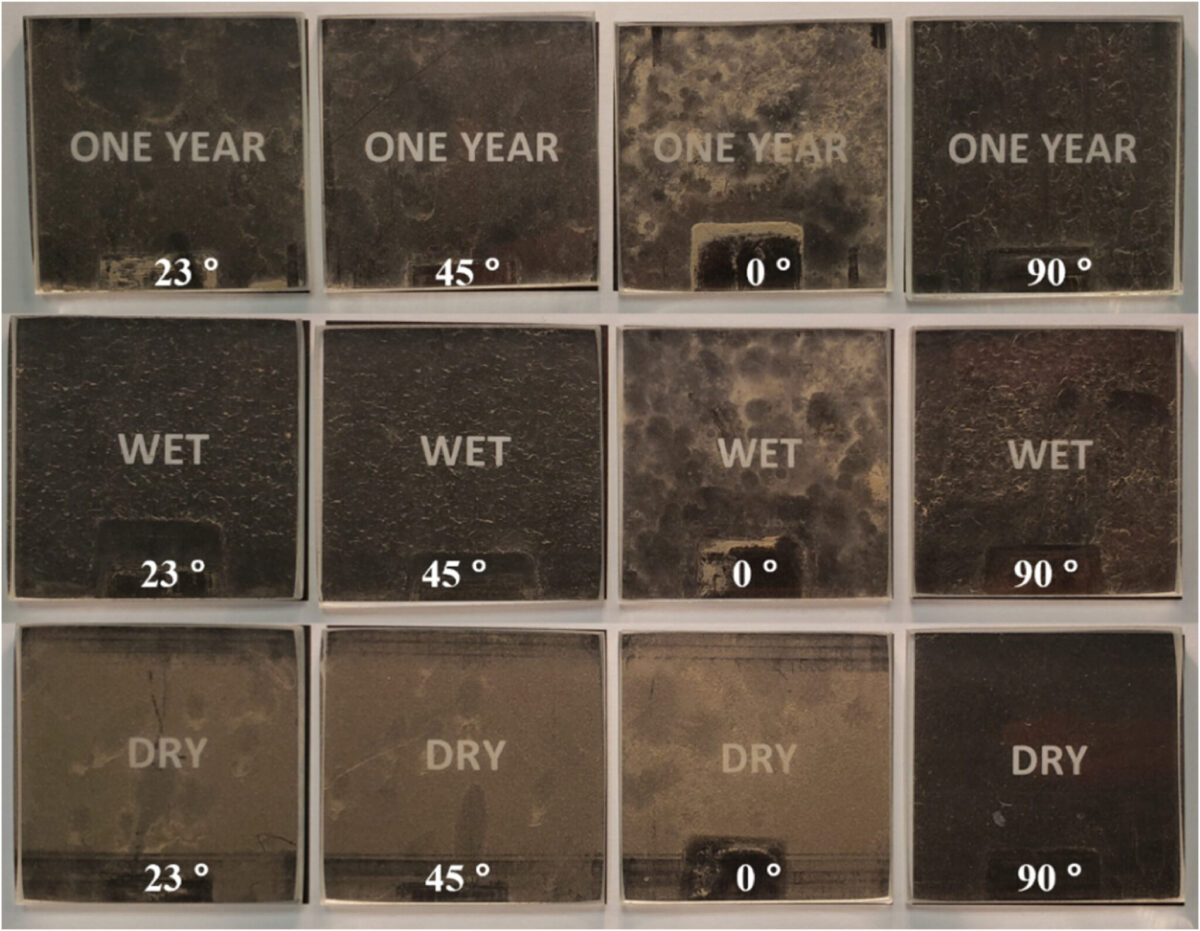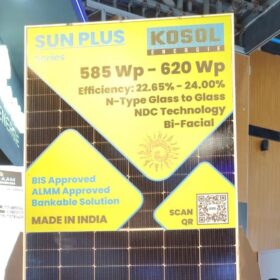Scientists from the Imperial College London and Karlsruhe Institute of Technology have investigated the impact of soiling on solar module glass surfaces in semi-desert regions.
They looked at how soiling may affect the performance of PV panels in optical and electrical power. “We have also conducted an economic analysis in regards to soiling, but we have not published it yet. The findings indicate that the economic loss depends greatly on the individual location,” research co-author Christos Markides told pv magazine.
The study is based on 60 samples collected from a soiling station in Muscat, Oman.
“Estimating the energy yield from real PV installations remains challenging due to an over/underestimation of soiling losses. Soiling losses strongly depend on particle size, shape and their associated spectra which significantly impact PV performance,” the paper stated. ”In this work, we present results from an extensive outdoor experimental testing campaign of soiling, apply detailed characterization techniques, and consider the resulting losses.”
In the paper, “Characterisation of soiling on glass surfaces and their impact on optical and solar photovoltaic performance” recently published in Renewable Energy, Markides and his colleagues explained that the samples tested were made of low-iron glass coupons. These coupons are commonly used within the solar industry for encapsulating the top layer of a PV module. Glass samples were collected by the end of each month during 2021 and in two seasonal periods in the wet and dry season. For each collection period, the researchers gathered four samples, of 0, 23, 45 and 90 degrees, respectively.
The samples were then sent to London for optical transmittance testing. The analysis showed that the relative transmittance of the horizontal samples decreased by 65% in the wet season, 68% in the dry season and 64% in the entire year.
“In comparison, the vertical coupons showed a relative transmittance drop of 34%, 19% and 31%, respectively,” the research group added. “The average relative transmittance decrease across all tilt angles was 44%, 49% and 42% for wet, dry and one-year coupons, respectively.”

Image: Imperial College London, Renewable Energy, CC BY 4.0 DEED
Based on those results, the researchers calculated the expected electricity loss at a standard test condition of 1,000 W/m2 radiation and a temperature of 25 C with a monocrystalline PV module.
“The relative transmittance reductions measured on the horizontal wet-season, dry-season and full-year samples correspond to predicted relative reductions in electrical power generation by 67%, 70%, and 66%, respectively,” they added. “Based on a local tilt angle of 23 degrees, the relative transmittance losses are estimated at around 30% per month, resulting in an equivalent relative PV power reduction of around 30% per month at the studied location.”
The scientists then used X-rays and electron microscopes to characterize the soil particles. As all the glass samples were located in the same place, the scientist assumed that their soiling would have the exact material characterization. They therefore analyzed only horizontal glass coupons for the wet and dry seasons and the entire year.
“According to the X-ray diffraction (XRD) findings, the full-year horizontal soiled coupon has a variety of minerals such as silicon dioxide, calcium carbonate, calcium magnesium carbonate, titanium dioxide, iron carbide, and aluminum silicate,” they emphasized. “The elemental map emphasizes the chemical compounds reported by the XRD analysis. Silicon (Si) is the most dominant element, while the rest are carbon (C), oxygen (O), sodium (Na), magnesium (Mg), aluminum (Al), calcium (Ca) and iron (Fe).”
The researchers also found that the dry season sample had more PM10 particles – these are particles with a diameter of less than 10 μm – than the wet season sample. “It was also shown that natural cleaning due to periodic rains can eliminate the accumulation of larger particle but not of smaller ones,” they explained in the paper.
This content is protected by copyright and may not be reused. If you want to cooperate with us and would like to reuse some of our content, please contact: editors@pv-magazine.com.








By submitting this form you agree to pv magazine using your data for the purposes of publishing your comment.
Your personal data will only be disclosed or otherwise transmitted to third parties for the purposes of spam filtering or if this is necessary for technical maintenance of the website. Any other transfer to third parties will not take place unless this is justified on the basis of applicable data protection regulations or if pv magazine is legally obliged to do so.
You may revoke this consent at any time with effect for the future, in which case your personal data will be deleted immediately. Otherwise, your data will be deleted if pv magazine has processed your request or the purpose of data storage is fulfilled.
Further information on data privacy can be found in our Data Protection Policy.